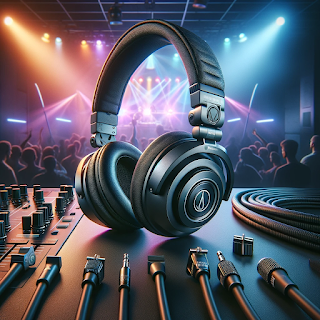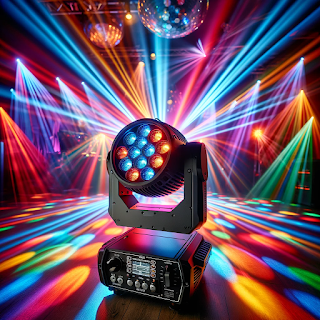Mastering the Art of Effective Lighting: A Deep Dive into Techniques for Mobile DJs
Lighting is an integral aspect of any mobile DJ setup. It can make or break the atmosphere of an event, influence the mood of the audience, and even accentuate the music being played. While many DJs focus primarily on their music collection and mixing skills, mastering the art of effective lighting can elevate your performances to a whole new level. In this article, we'll delve deep into techniques that every mobile DJ should be familiar with.
### Understanding the Basics
Before diving into advanced techniques, it's essential to grasp the fundamental concepts of lighting:
1. **Beam Angle:** This refers to the angle at which light is projected. A narrow beam angle focuses the light on a smaller area, creating a spotlight effect, while a wider beam angle disperses light over a larger area.
2. **Gobo:** A template that is placed inside or in front of a light source to control the shape of the emitted light.
3. **Wash:** A light that produces soft-edged beams, ideal for covering larger areas.
4. **Par Can:** A versatile and widely used type of stage light that produces a more concentrated beam.
### Color Theory
The colors you choose play a significant role in setting the mood. Here are some tips on using colors effectively:
- **Warm Colors (Reds, Oranges, Yellows):** These can create an energetic and vibrant atmosphere, ideal for high-energy music genres.
- **Cool Colors (Blues, Greens, Purples):** These tend to have a calming effect, making them suitable for slower or more ambient tracks.
- **Complementary Colors:** Using colors that are opposite each other on the color wheel can create a dynamic contrast. For example, pairing blue with orange can be visually striking.
### Techniques to Enhance Your Performance
1. **Syncing with Beats:** Synchronize your lighting changes with the beats of the music. This can be achieved manually or using DMX software that allows for automatic synchronization.
2. **Use of Movement:** Moving lights, or lights with the capability to pan and tilt, can add dynamism to your setup. You can use them to scan the crowd or focus on a particular area.
3. **Layering:** Combine different lights to create depth. For instance, use a wash light to set a base color and layer it with spotlights or gobos to add texture.
4. **Creating Zones:** Divide your dance floor or stage into zones and light each one differently. This can help in guiding the audience's attention to specific areas.
5. **UV Lighting:** Also known as black lights, UV lights can make white and fluorescent colors glow in the dark, adding a unique element to your setup.
### Audience Engagement
Effective lighting can be used to engage and interact with your audience:
- **Spotlighting:** If there's a particular group or individual who's really getting into the groove, put them in the spotlight, literally. It can encourage others to join in the fun.
- **Interactive Lighting:** Some advanced lighting systems can be controlled using apps or remote controls. Handing over this control to a few audience members, even for a short time, can be a unique way to engage them.
### Safety First
While lighting can enhance your setup, it's crucial to ensure safety:
- Always ensure that your lights are securely mounted.
- Avoid placing lights in areas where they might cause tripping hazards.
- Be cautious when using strobe lights, as they can cause discomfort or health issues for some individuals.
### Conclusion
Mastering the art of lighting is much more than just setting up a few lights. It's about understanding the mood, the music, and the audience. By investing time in learning effective lighting techniques, you can truly differentiate yourself as a mobile DJ and offer an immersive experience that goes beyond just the audio.




Comments
Post a Comment